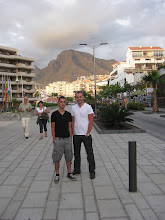The most familiar modern type of portable buildings are designed so that one can be carried to or from site on a large lorry and slung on and off by a crane.
Modern usage
The modern portable building, or "knock-down" building, was first developed by United States firm Porta-Kamp in 1955. The first portable building under the trade name Portakabin was built in 1961 in England. Currently the UK's number one supplier of portable buildings is Elliott Hire. Elliott Hire is a division of Elliott, which is a subsidiary of Algeco which together with Williams Scotsman is the largest supplier of portable accommodation in the world.Portable modular buildings have various uses. They are often seen, alone or in groups, as temporary site offices on building sites (where they are often stacked two high with metal stairs to reach the upper level; see also construction trailer). Other uses for these and other types of portable buildings are as guard sticks, rural offices, on-site changing rooms, etc. Some portable buildings are very complex by joining units these forming large office blocks. (even over several floors). These are often disguised as a normal building often with brick style cladding and a traditional pitched roof. Tara Park developed by Liverpool City Council have even used portable buildings to create temporary/permanent domestic housing for communities complying with UK building regulations and disable access.
Due to population increases in many areas, portable buildings are sometimes brought in to schools to provide relief from overcrowding. Portable classroom buildings often include two classrooms separated by a partition wall and a toilet.


Neil, thanks for the mention.
ReplyDeleteElliott